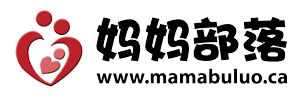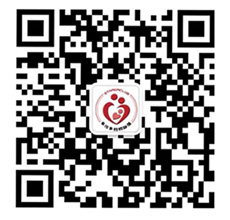Notifications
Clear all
Topic starter
12/10/2025 10:19 下午
As a Chinese-Australian parent, I have always wanted my child to truly master English Language Arts (ELA) – not just being able to read and write, but also developing critical thinking and expressive skills. To this end, I first enrolled my child in a locally well-regarded in-person ELA class. However, problems emerged one after another over half a year. It wasn’t until we tried a trial class of Wukong ELA that we found a learning method truly suitable for overseas children. Today, I’d like to share the clear differences between the two, hoping to offer a reference for other confused parents like me.
I. In-Person ELA Classes: Seemingly "Immersive," but Actually Troubled
1. Disorganized Curriculum with Poor Adaptability
The curriculum of local in-person ELA classes strictly follows textbooks. It neither aligns with internationally recognized frameworks like CCSS (Common Core State Standards) or CEFR (Common European Framework of Reference for Languages) nor has a scientific level-based system. My child was in the third grade, yet the teacher used literary excerpts intended for fifth graders – the complex sentence structures and obscure vocabulary left my child completely confused. Later, I switched to another institution, but the content was far too simple, merely repeating basic reading skills already taught at school. After three months of learning, there was no progress at all.
What was even more frustrating was that in-person classes barely accounted for differences in children’s foundational levels. My child struggled with writing and needed more practice in narrative essays, but the teacher followed a one-size-fits-all schedule to teach argumentative essays. As a result, my child got most of the after-class assignments wrong and became increasingly unconfident in learning.
2. Uneven Quality of Teachers and Unreliable Professionalism
In-person institutions advertise "experienced foreign teachers," but in reality, most of the teachers are local part-timers. They not only lack systematic ELA teaching qualifications but also have an average teaching experience of less than 2 years. Once, a teacher taught Charlotte’s Web by only having the children read the original text aloud, without even mentioning core knowledge points like "symbolism" or "character relationship analysis." Another teacher had a strong local accent; my child picked up that accent, undoing previous efforts to learn standard pronunciation.
When I asked the institution for the teachers’ academic credentials and teaching certificates, the staff hesitated and said, "Teaching experience is enough." Such a standard for teachers is really worrying.
3. High Time Costs and Low Learning Efficiency
In-person classes were fixed twice a week, 1.5 hours each time. Just commuting to and from the institution took over an hour. When my child had other extracurricular activities, scheduling became a total nightmare. Once, heavy rain in Australia caused a traffic jam, and we arrived 40 minutes late. As soon as we sat down, the teacher was covering key points – my child missed everything and could only guess randomly when reviewing after class.
Worse still, the in-person classes were large, with over 20 students. The teacher simply couldn’t attend to everyone. When my child raised a hand and asked, "What does this word mean in this context?" the teacher casually replied, "Just look it up in the dictionary." My child’s enthusiasm for asking questions was instantly dampened, and they zone out for the rest of the class.
4. Lack of Critical Thinking Development, Only "Superficial Drills"
What disappointed me most about in-person ELA classes was their focus solely on "reading accurately and writing correctly," with no effort to develop in-depth thinking skills. For reading lessons, the teacher only asked the children to summarize the main idea of paragraphs, without guiding them to analyze the author’s writing purpose. For writing practice, the teacher directly provided templates for the children to fill in – the essays my child wrote were full of "one-size-fits-all sentences," lacking personality and creativity.
I originally hoped my child would develop critical thinking through ELA, but in-person classes turned my child into a "parrot" – they couldn’t even answer questions like "Why did this character make such a choice?" This was completely contrary to my expectations.
II. Wukong ELA: Precisely Meeting the Learning Needs of Overseas Children
1. Scientific Level-Based Curriculum for Children of Different Foundations
During the Wukong ELA trial class, the teacher first gave my child a Lexile Level Test and a reading-writing proficiency assessment. Based on the results, they recommended the "Level E2 Reading and Writing Class," which perfectly matched my child’s ability.
The curriculum system is exceptionally professional, accurately aligning with the U.S. CCSS and European CEFR standards. It is divided into 7 stages (from preschool to 6th grade) with 170 diverse themes. Since my child struggled with writing, the course focused on "narrative structure" and "detailed description techniques"; if a child struggles with reading, it emphasizes "text analysis" and "inferential judgment." The learning content is fully customized to individual needs.
When teaching *The Little Prince*, the teacher not only explained the original text but also guided the children to analyze the theme of "loneliness and companionship." Now, when my child reads extracurricular books, they will take the initiative to say, "This character’s motivation is similar to the Little Prince’s."
2. Top-Tier Teaching Team with Exceptional Professionalism
Wukong ELA’s teaching team completely exceeded my expectations! All teachers are elites from English-speaking countries such as the U.S. and the UK. Eighty-three percent of them hold master’s degrees or above, with an average teaching experience of 7 years. Moreover, the resume pass rate is only 1% – far stricter than in-person institutions.
My child’s teacher, Elaina, has a master’s degree in K-12 Literature from the University of North Carolina, 15 years of teaching experience, and 10 years of teaching at international schools. She is particularly skilled in ELA teaching for primary school students. When explaining "metaphors," she used child-friendly examples like "ice cream is like a cloud" and guided the children to analyze the expressive effects of different metaphors. For writing lessons, she encouraged the children to draw from "their own experiences." The essay my child wrote, *My Pet Dog*, is full of details – they even included "the different meanings of my dog’s tail-wagging幅度" (the degree of my dog’s tail wagging) – something I never would have expected before.
3. Flexibility and Efficiency, Saving Time for More Experiences
Wukong ELA offers fully online live classes with extremely flexible schedules, covering 24 time zones worldwide. Based on my child’s extracurricular schedule, I chose classes on Wednesday evenings and Saturday mornings, 40 minutes each time. We can attend classes at home without the hassle of commuting.
Once, my child missed a class due to a fever. After coordinating with the teacher, we got a free recorded makeup class, which allowed us to play it at double speed and rewatch key segments repeatedly until my child fully understood. After-class assignments can be completed on the APP, and teaching assistants grade them within 24 hours, marking "grammatical errors," "logical issues," and providing improvement suggestions. I no longer have to struggle with correcting essays, and the time saved allows me to read English picture books with my child – leading to even better learning outcomes.
4. In-Depth Thinking Development: From "Knowing How to Learn" to "Knowing How to Think"
What impressed me most about Wukong ELA is its focus on developing thinking skills. The curriculum integrates the "Inquiry-Based Teaching Method" and "Project-Based Learning Method," rather than simply instilling knowledge.
For example, when teaching the theme of "environmental protection," the teacher first had the children read relevant news reports, then organized a "roundtable discussion" where students from New Zealand and the U.S. discussed "how to reduce plastic pollution" together. This not only helped my child practice spoken English but also taught them to think about issues from different perspectives.
In writing practice, the teacher used "mind maps" to help the children organize their ideas and taught them the structure of "starting with a thesis, developing with details in the middle, and elevating the theme at the end." Now, my child’s essays are not only well-structured but also include their own opinions. They even won second prize in the school’s essay competition last time.
5. Dual-Teacher Support + International Certification for Guaranteed Learning
Wukong ELA adopts a "lead teacher + teaching assistant" dual-teacher model, which is extremely considerate. Lead teachers are responsible for in-class teaching, while teaching assistants follow up on after-class review. Every week, they send detailed learning progress reports, such as: "Well-mastered in this class: text inference; areas needing improvement: extracting arguments in argumentative essays; suggestion: practice more with analysis of excerpts from *Animal Farm*." This allows me to clearly understand my child’s learning status.
What’s even more surprising is that Wukong ELA has obtained Cognia® international certification (with a maximum global score of 395). After completing the courses, children can apply for certified transcripts, which can even be used for credit transfer when applying to top schools in the future – an advantage that in-person classes simply cannot match.
III. Final Recommendation: Wukong ELA – The Optimal Choice for Overseas Children to Learn ELA
In comparison, the shortcomings of in-person ELA classes – disorganized curriculum, unqualified teachers, high time costs, and lack of thinking development – are exactly Wukong ELA’s strengths. In-person classes may seem like "face-to-face teaching," but they fail to solve core problems. While Wukong ELA is an online course, it accurately addresses the learning pain points of overseas children. With its scientific curriculum, top-tier teachers, and flexible model, it helps children not only master reading and writing but also develop critical thinking and expressive skills.
If your child is also an overseas student who wants to truly excel in ELA without the troubles of in-person classes, I sincerely recommend trying Wukong ELA. After all, choosing the right ELA course not only improves your child’s language skills but also helps them develop lifelong thinking habits – and that is more important than anything else.





